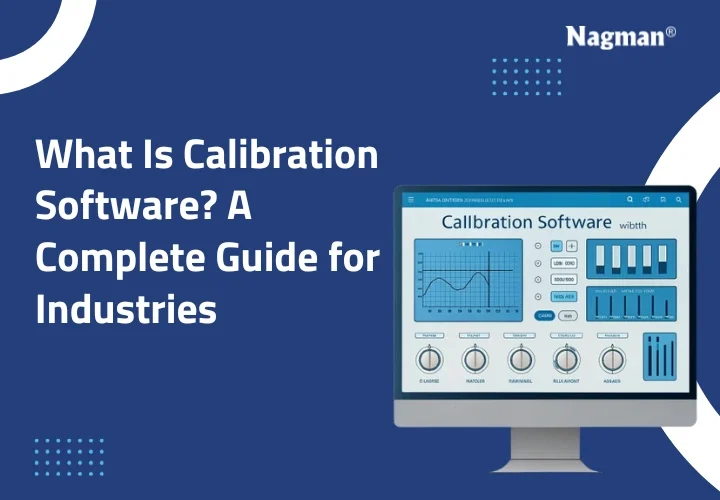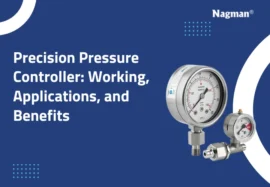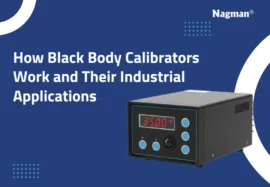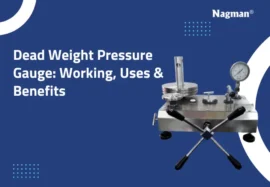Calibration is essential for maintaining accuracy, reliability, and consistency across industrial processes. Even minor deviations in measurement instruments can lead to financial losses, quality issues, or safety hazards. That’s why industries adopt routine instrument calibration and the latest calibration software to ensure optimal performance
Introduction to Calibration and Its Industrial Importance
Calibration refers to comparing an instrument’s readings to a known reference standard to ensure accurate performance. Whether it’s a pressure gauge, thermometer, multimeter, flow meter, or weighing scale, accurate readings are vital for safety and productivity.
What Is Calibration Software?
Calibration software is a digital platform used to automate, manage, and document the calibration process. It helps industries schedule calibration tasks, monitor instrument performance, generate calibration certificates, and maintain audit-ready records. By eliminating manual errors and ensuring ISO compliance, calibration software improves accuracy, efficiency, and reliability in industrial operations.
Schedule calibration tasks automatically
Monitor instrument accuracy
Store historical calibration records
Generate certificates
Ensure compliance with ISO 17025, ISO 9001, and other regulatory standards
For large facilities handling thousands of instruments, digital calibration software eliminates human error and enhances operational transparency.
How Calibration Software Streamlines Instrument Calibration
Proper planning, execution, and validation are required for accurate instrument calibration. Here is how calibration software streamlines calibration:
- Automatically scheduling tasks based on due dates and usage.
- Assigning responsibilities to technicians.
- Providing step-by-step calibration steps.
- Minimizing documentation errors through digital documentation.
- Generating calibration certificates quickly.
- Keeping audit-ready logs for inspections.
Understanding Process Calibrators
Process calibrators are essential instruments used to examine, assess, and calibrate the instruments found in industrial plants. These tools measure parameters such as pressure, current, voltage, frequency, and flow. They help technicians diagnose faults, verify sensor outputs, and check the accuracy of control systems.
These tools are used by industries that require heavy automation, such as oil and gas, chemical processing, and water treatment, to operate safely and efficiently.
Multifunction Calibrators and Their Advantages
A multifunction calibrator is a useful tool for measuring a wide range of signals, such as electrical, temperature, pressure, and frequency values. Technicians do not need to carry separate tools for each type of calibration; one device should be used for multiple tasks.
Key advantages include:
- Light equipment load on technicians.
- Greater flexibility in the field
- Improved work accuracy and enhanced processes.
- Compatibility with multiple industrial instruments.
Temperature Calibrators in Industrial Applications
Temperature is one of the most critical parameters in industrial operations. Incorrect temperature readings can compromise product quality, safety, and compliance. A temperature calibrator is used to test sensors, thermostats, RTDs, thermocouples, and digital thermometers to ensure accurate temperature monitoring.
They are widely used in pharmaceuticals, food processing, HVAC, manufacturing, laboratories, and energy production.
One of the most important parameters in industrial operations is temperature. Incorrect temperature measurements can compromise product quality, safety, and compliance. Sensors, thermostats, RTDs, thermocouples, and digital thermometers are tested with temperature calibrators to ensure accurate temperature measurements.
Their primary use is in industries such as pharmaceuticals, food processing, manufacturing, laboratories, and energy production.
Key Benefits of Using Calibration Software
Using this software is beneficial in several ways:
- Improved accuracy and fewer manual errors.
- Efficient organization of calibration data.
- Monitoring of instrument history in real time.
- Automatic alerts for due or overdue calibrations.
- Increased regulatory compliance.
- Faster auditing and simplified reporting.
- Cost savings through efficient planning.
Choosing the Right Calibration Software for Your Industry
When looking for the right software, consider:
- Compatibility with your existing instruments and systems.
- Minimal training requirements and user-friendliness.
- Cloud-based or on-premise implementation.
- Automated generation of reports.
- Integration with ERP or quality management systems.
- Scalability for future operational growth.
- Strong data protection and security features.
Future of Calibration: Automation and Digital Transformation
Calibration software is moving towards full automation, AI-based analytics, and seamless integration with Industry 4.0 systems. Calibration software will be at the center of this transformation as it connects devices, automates processes, and enables smarter decision-making. With data becoming increasingly important in industrial environments, digital calibration systems will be essential for maintaining accuracy, safety, and competitiveness in the long run.
Conclusion
Using the right calibration software is not just about compliance—it’s about improving accuracy, improving operational efficiency, and minimizing risk. As industries move toward digitization, automated calibration tools will become indispensable for long-term reliability and quality performance.






